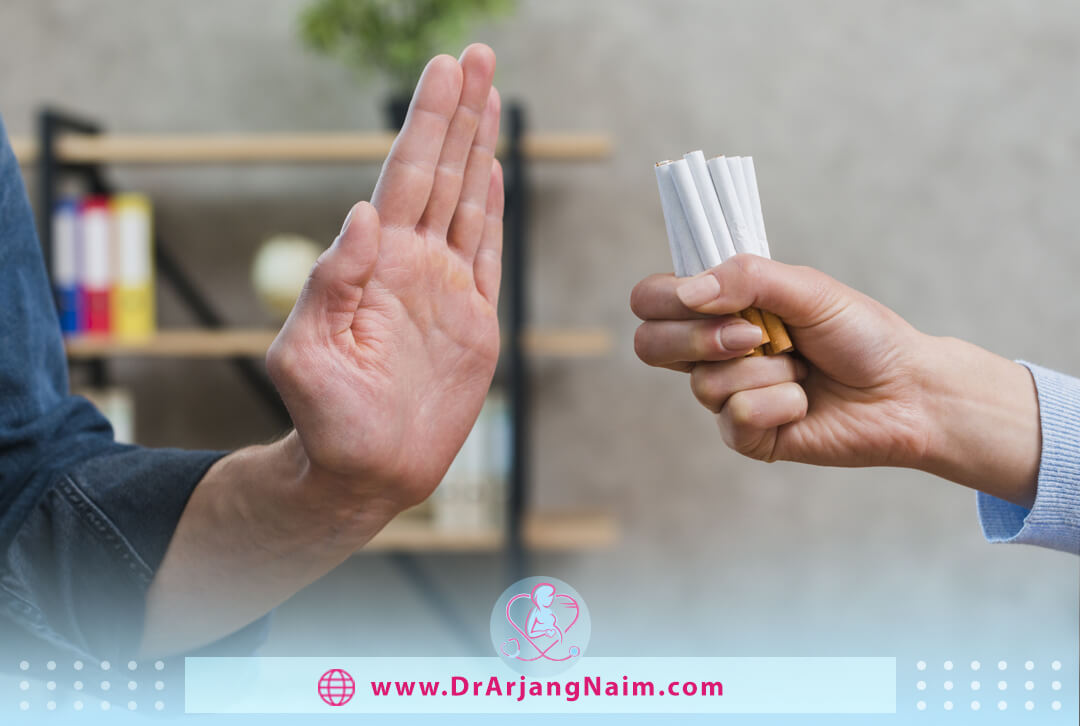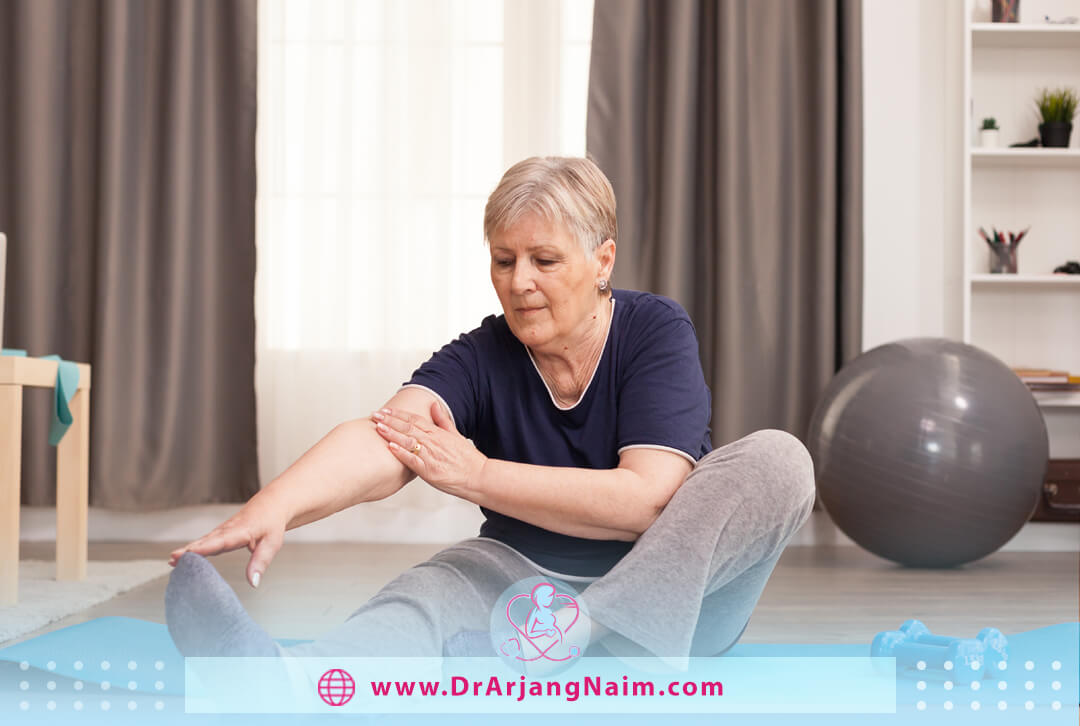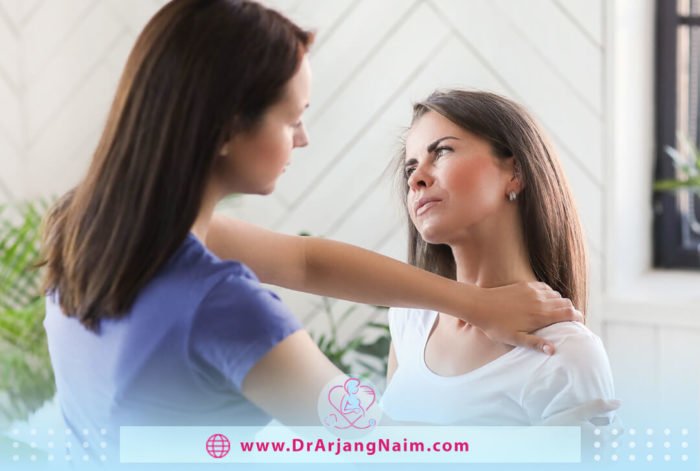Osteoporosis occurs when bone density decreases. The body absorbs more bone tissue and produces less to replace it. The inside of a healthy bone, like a honeycomb, has small spaces. It increases the size of these spaces and causes a loss of bone strength and density. In addition, the outer part of the bone becomes weaker and thinner.
In people with osteoporosis, the bones become weak and porous, and the risk of fractures increases, especially in the pelvis, spine, and some peripheral joints, such as the wrist. Osteoporosis can occur in people of any age but is more common in the elderly, especially women. It affects men and women of all races, but white and Asian women, especially older women who have gone through menopause, are most at risk. medication, a healthy diet, and exercise can help prevent bone loss or strengthen weak bones.
Symptoms
The early stages of osteoporosis have no warning symptoms or signs. In most cases, people with Decreased bone density do not know they have the condition until they have a fracture. Some of the early symptoms include:
- Receding gums
- Weakened grip strength
- Weak and brittle nails
- Back pain, caused by a fractured or collapsed vertebra
- Loss of height over time
- Stooped posture
- bones break much more quickly than expected
Causes
The bones are in constant renewal, new bone is made, and old bone is broken down. At a young age, the body builds new bone mass faster than it breaks down old bones. After the early 20s, this process slows down, and most people reach their maximum bone mass by the age of 30. With age, bone mass disappears faster than it builds up.
The risk of developing osteoporosis depends in part on the amount of bone mass in youth. Peak bone mass is somewhat inherited and also varies by ethnic group. The higher the peak bone mass, the more bone is in the bank and the less likely bone density will decrease with age.
Risk factors
Several factors can increase the risk of decreased bone density, including race, age, lifestyle choices, and medical conditions.
Unchangeable risks
Some risk factors for osteoporosis are uncontrollable, including:
- Sex: Women are much more likely to develop osteoporosis than men.
- Age: The risk of osteoporosis increases with age.
- Race: Whites or Asians are more likely to have low bone density.
- Family history: Having a parent or sibling puts a person at greater risk, significantly if the mother or father has fractured a hip.
- Menopause: Menopause is another major risk factor in women between the ages of 45 and 55. Menopause can cause faster bone loss in women due to changes in the levels of hormones associated with it.
- Body frame size: Men and women with smaller body frames are more at risk because they may have less bone mass to extract as they age.
Hormone levels
Osteoporosis is more common in people who have high or very low levels of certain hormones. Examples are:
- Sex hormones: Decreased sex hormone levels weaken bones. Decreased estrogen levels in postmenopausal women is one of the strongest risk factors for osteoporosis. Treatment for prostate cancer, which lowers testosterone levels in men, and treatment for breast cancer, which lowers estrogen levels in women, are likely to cause bone loss.
- Thyroid problems: Excess thyroid hormone can cause bone loss. Decreased bone density occurs if the thyroid is overactive or if thyroid hormone medications are used in large amounts to treat hypothyroidism.
- Other glands: It has also been associated with overactive parathyroid and adrenal glands.
Dietary factors
Osteoporosis is more common in people who have the following:
- Low calcium intake: Lifelong calcium deficiency helps reduce bone density, premature bone loss and increases the risk of fractures.
- Eating disorders: Severe food restriction and weight loss lead to weak bones in men and women.
- Gastrointestinal surgery: Surgery to reduce the size of the stomach or remove part of the bowel limits the amount of space available to absorb nutrients, including calcium. These surgeries include those performed on weight loss and other gastrointestinal disorders.
Steroids and other medications
Long-term use of oral or injectable corticosteroids, such as prednisone and cortisone, interferes with bone regeneration. It is also associated with medications used to fight or prevent:
- Seizures
- Gastric reflux
- Cancer
- Transplant rejection
Medical conditions
People with some medical issues are at higher risk for osteoporosis, including:
- Celiac disease
- Inflammatory bowel disease
- Kidney or liver disease
- Cancer
- Multiple myeloma
- Rheumatoid arthritis
Lifestyle choices
Some bad habits can reduce bone density. Some of them include:
- Sedentary lifestyle: People who spend a lot of time sitting are more likely to develop osteoporosis than more active people. Any weight training, balance, and posture are good for the bones, but walking, running, jumping, dancing, and weightlifting are especially helpful.
- Excessive alcohol consumption: Regular consumption of more than two alcoholic beverages a day increases the risk of bone loss.
- Tobacco use: The exact role of tobacco in osteoporosis is not known, but it has been shown that smoking weakens bones.
Prevention

Some lifestyle changes can reduce the risk of decreased bone density.
Calcium and vitamin D intake
Calcium is essential for bones, so make sure you get enough calcium daily. Adults 19 years and older should consume 1000 mg of calcium per day. Women over the age of 51 and all adults over the age of 71 should take 1,200 mg daily.
Dietary sources include:
- Dairy foods, such as milk, cheese, and yogurt
- Green leafy vegetables, such as kale and broccoli
- Fish with soft bones, such as tinned salmon and tuna
- Fortified breakfast cereals
Supplements are an option if a person’s calcium intake is insufficient. Vitamin D also plays an important role in preventing a decrease in bone density because it helps the body absorb calcium. Food sources include fortified foods, saltwater fish, and liver. However, most vitamin D does not come from food but sun exposure, so doctors recommend being exposed to moderate to regular sunlight.
Lifestyle factors

Other ways to minimize the risk include:
- Avoid smoking because it can reduce new bone growth and lower estrogen levels in women.
- Limit alcohol consumption
- Regular weight-bearing exercise, such as walking, because it strengthens healthy bones and strengthens muscle support.
- Exercises to increase flexibility and balance, such as yoga, can reduce the risk of falls and fractures.
Diagnosis
The physician considers the family history and risk factors. If osteoporosis is suspected, a bone mineral density (BMD) scan is requested. Bone density scans use a type of x-ray known as dual-energy X-ray absorptiometry (DEXA). DEXA can indicate the risk of fractures due to osteoporosis. It can also help control a person’s response to treatment. Two types of devices can perform DEXA scans:
- A central device: This is a hospital scan that measures the mineral density of the femur and spine while the person is lying on a table.
- A peripheral device: It is a mobile device that tests the bones of the wrist, heel, or finger.
DEXA test results
Doctors give the test results as a DEXA T score or a Z score.
The T-score compares the bone mass of individuals to the peak of bone mass of young individuals.
- -1.0 or above shows good bone strength
- from -1.1 to -2.4 suggests mild bone loss
- -2.5 or below indicates osteoporosis
The Z score compares bone mass to other people with the same structure and age. The doctor usually repeats the test every two years because this allows them to compare results.
Other tests
Another method that doctors use to assess the reduction in bone density is heel bone ultrasound, which can be done in a primary care setting. It is less common than DEXA, and physicians cannot compare measurements with DEXA T scores.
Treatment
If the test shows that a person has osteoporosis, the doctor will set up a treatment plan in consultation with the Patient. The doctor will likely prescribe medication as well as lifestyle changes. These lifestyle changes can include increased calcium and vitamin D intake as well as proper exercise.
There is no perfect cure for osteoporosis, but proper treatment can help protect and strengthen bones. These treatments can help slow down the breakdown of bone in the body, and some treatments can stimulate the growth of new bone.
Medications
The most common medication used to treat is called a bisphosphonate. Bisphosphonates are used to prevent bone loss. They may be taken orally or by injection. Other medications may be used to prevent bone loss or stimulate bone growth. They are:
- Testosterone: In men, testosterone therapy may help increase bone density.
- Hormone therapy: For women, the estrogen used during and after menopause can help reduce bone density.
- Estrogen therapy :Unfortunately, estrogen therapy is also associated with an increased risk of blood clots, heart disease, and certain types of cancer.
- Raloxifene (Evista): It has been shown to offer the benefits of estrogen without many of the risks, although there is still a risk of blood clots.
- Denosumab (Prolia): It is injected and maybe even more useful than bisphosphonates in reducing bone loss.
- Teriparatide (Forteo): It is injected and stimulates bone growth.
- Romosozumab (Evenity): The drug was approved by the FDA in April 2019 to treat postmenopausal women at high risk for fractures.
Natural treatments
Because osteoporosis medications can have side effects, patients may want to try other treatments instead of medication. Numerous supplements such as red clover, soy, and black cohosh can be used to promote bone health. However, be sure to consult a doctor or pharmacist before using these supplements.
Diet
In addition to a treatment plan, a proper diet can help strengthen bones. To maintain healthy bones, some nutrients should be included in the daily diet. The most important of these are calcium and vitamin D. The body needs calcium to maintain strong bones and vitamin D to absorb calcium. Other nutrients that increase bone health include protein, magnesium, vitamin K and zinc.
Exercises

Proper nutrition is not the only thing can do to keep bones healthy. Exercise is also very important, especially weight-bearing exercises. Weight training exercises are performed with the legs or arms on the floor or other surfaces. Examples are:
- Climbing stairs
Resistance training, such as:
- Leg presses
- Squats
- Pushups
Weight training, such as working with:
- Resistance bands
- Dumbbells
- Resistance exercise machines
These exercises help because they cause muscles to push and pull against bones. This tells the body that it is forming new bone tissue that will strengthen bones. In addition to the many positive effects on weight and heart health, exercise also improves balance and coordination.
What every woman should know about osteoporosis
Facts about reducing bone density include:
- It is a common condition
- It is primarily affecting women
- It is a common cause of broken bones
- It is often a silent disease
- Can take steps to keep your bones strong
Differences between osteopenia and osteoporosis
Osteopenia and Osteoporosis are both conditions that affect the strength and health of bones. Bone strength can be measured by bone density (BMD) scores. BMD measures the level of minerals such as calcium in the bones, and a lower score means that a person is at greater risk for fractures. The first step towards Osteoporosis is osteopenia, which means that the bone density is lower than normal, but has not yet caused real problems. Osteoporosis is a more serious progression of osteopenia.
As bone density decreases, the honeycomb structure inside the bones becomes more porous. The more open spaces there are inside the bones, the more strength and density they lose. Light and fragile bones formed by Osteoporosis can put a person at greater risk for fractures.
The bottom line
Osteoporosis means a decrease in bone density, which reduces bone strength and makes it more likely to break. It usually progresses gradually and does not show any symptoms until a fracture occurs.
The good news is that there are many things you can do to prevent and treat, from proper nutrition and exercise to proper medication. Consult your doctor if you think you may have Osteoporosis or if you have been diagnosed.
Additional questions
- Is walking good for osteoporosis?
Bone loss can be prevented by regular exercise such as walking. If you have osteoporosis or fragile bones, brisk walking can help keep your bones strong and reduce your risk of future fractures.
- How fast does osteoporosis progress?
While some bone is lost each year, the rate of bone loss increases dramatically in the 5 to 10 years after menopause. Then, for several years, bone breakdown occurs much faster than new bone formation. This is the process that ultimately causes osteoporosis.
- What is the best doctor to see for osteoporosis?
Rheumatologists treat patients with age-related bone diseases. They can diagnose and treat osteoporosis. Endocrinologists, who see patients with hormone-related problems, also manage to treat metabolic disorders such as osteoporosis.
- What is Celiac disease?
Celiac disease is an inherited digestive disease caused by sensitivity to gluten (a protein found in wheat, barley, and rye). When the affected person receives gluten, his immune system attacks the intestinal cells. This leads to damage to the absorptive surface of the intestine. As a result, the body will be unable to absorb nutrients such as fat, protein, carbohydrates, vitamins, and minerals.
5.What is Rheumatoid arthritis?
Rheumatoid arthritis, or rheumatoid arthritis, is an autoimmune and inflammatory disease, meaning that the body’s immune system mistakenly attacks healthy body cells, causing inflammation in the affected body parts
References:
https://www.novanthealth.org/healthy-headlines/4-things-every-woman-needs-to-know-about-osteoporosis
https://www.aiwhcincinnati.com/blog/what-every-woman-should-know-about-osteoporosis
https://www.mayoclinic.org/diseases-conditions/osteoporosis/diagnosis-treatment/drc-20351974
https://www.healthline.com/health/osteoporosis
https://www.medicalnewstoday.com/articles/155646
https://www.healthline.com/health/osteoarthritis/osteopenia-vs-osteoporosis#key-differences




